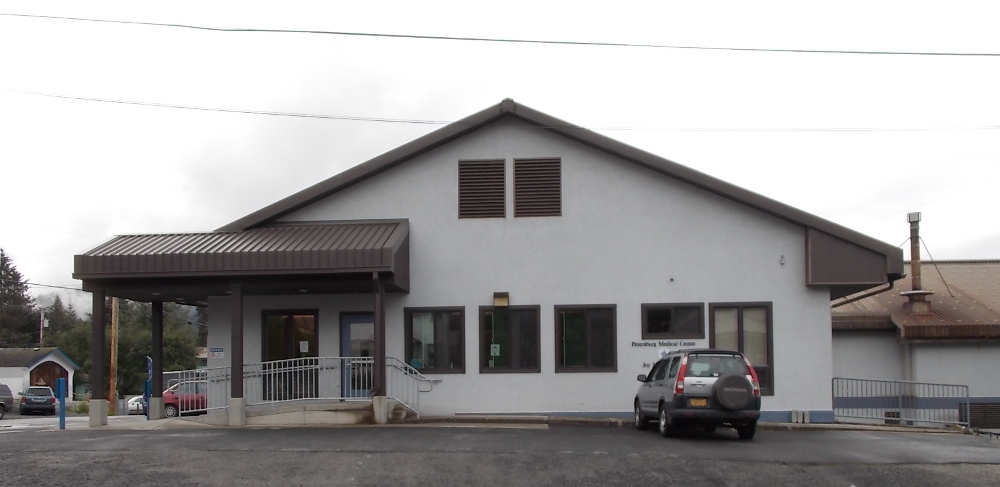
Consultants are studying the options for a new community hospital in Petersburg and have found out a few things about the existing medical center site. A team of architects expects to come up with some preferred alternatives and better cost estimates by the end of the year for building a new facility near that existing site or somewhere else in Petersburg.
The planning effort for the Petersburg Medical Center is being paid for with a 224,000 dollar grant through the Denali Commission and it’s building on past studies of community needs and the condition of the aging building near downtown. Medical center CEO Phil Hofstetter started off an informational session about the effort this month.
“This is sort of the first step with involving the community on the master planning,” Hofstetter said. “We’ve been talking about master planning in a lot of our reports. We’re very fortunate to have Denali Commission funding to help with this master planning.”
Part of the planning effort is focusing on more of the specifics of the existing medical center building and locating a new facility near that downtown site. Architects have completed a seismic analysis of the current hospital, focusing on its ability to withstand an earthquake.
Dan Jardine is with NAC Architecture in Seattle and said the consultants did find what they call red flags in the structural design for the older building.
“These are structural terms for basically how the building is connected to the ground and maintains its stability during any seismic event,” he explained. “And these don’t necessarily mean that these were badly designed hospitals. The standards have been changing.”
A 2015 assessment by an architect found most systems in the building were near or beyond the end of their service life and needed to be replaced. That report estimated the cost of new building at more than 40 million dollars and the cost of upgrading the existing one at more than 16 million. Some parts of the facility are more than 30-50 years old.
This team of architects has also studied the risk from a tsunami wave and rising sea levels from global climate change. Jardine said there’s a very low risk from a tsunami even at the existing site.
“You know one of the main purposes of doing the tsunami study was to assess the risk of keeping the hospital in its current location and the result of that being you know the risk really isn’t that great,” he said. “And we understand from previous community interaction that there’s a lot of desire in keeping the hospital in the community rather than putting it out further away towards the airport. So right now we are looking at the existing hospital campus plus maybe some additional area around that block as an opportunity to look at some concepts for a replacement hospital. We’ll also be looking at a greenfield site elsewhere as a comparison.”
That means an undeveloped piece of land somewhere else in the community. Several other alternative sites around the ball fields, fire hall and Mountain View Manor are only slightly higher than the existing spot. Those would avoid the worst projections for sea level rise over the next 200 years.
Jardine expects to come up with size estimates for a new building that will increase the square footage from the existing facility. One example he used was for private rooms.
“The general standard now is to have private patient rooms in hospitals for infection control primarily but also for patient satisfaction of having that privacy and family in your room and have conversations and so on without being overheard by your roommate,” Jardine said. “This is especially important in a small community like Petersburg where you really want to have that privacy when you’re having conversations with your family and your doctor.”
Other tasks consultants are working on include a look at what services make sense to provide in the community and how much space would be needed in a new facility. They’ll be studying debt capacity for financing capital improvements and coming up with better cost estimates for a couple of preferred options for a new building. Jardine also said they’ll be looking at how a hospital replacement project could be phased.
He explains the team will provide alternatives for the community to compare.
“What are the advantages and disadvantages of each site or each concept so the decisions that are made can be truly value driven rather than just low dollar driven because the long term investment you make in the hospital, the dividends that are paid with a better design and a better location are going to overwhelm maybe the additional cost that you pay up front,” he said.
There’s been opposition in the community, even among elected officials, to building new, especially during a time of budget cutting at the state and local levels. The consulting team expects to have cost estimates and a final report by the end of the year.









